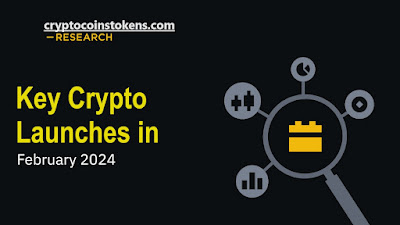Terra Luna (LUNA) and Terra Classic (LUNC) crypto currencies analysis differences and similarities
LUNA and LUNC are two different cryptocurrencies that operate on different blockchains. LUNA is the native cryptocurrency of the Terra blockchain, which is a Layer 1 blockchain that uses a delegated proof-of-stake consensus mechanism to process transactions. LUNA is used as a staking token, and holders of LUNA can participate in block validation and governance of the Terra network. LUNA is also used to pay for transaction fees and as a collateral asset in the issuance of Terra stablecoins.
On the other hand, LUNC is the native cryptocurrency of the Terra Luna Classic blockchain, which is a fork of the original Terra blockchain. LUNC operates on a different blockchain and has different features and use cases compared to LUNA. However, it's worth noting that LUNC is a relatively new cryptocurrency and doesn't have as much market adoption or liquidity as LUNA. It's important to conduct thorough research and exercise caution when investing in any cryptocurrency, including LUNC.
LUNA and LUNC Key Differences :
Launch date: LUNA was launched in 2019, while LUNC was launched in 2022.
Use case: LUNA is the native cryptocurrency of the Terra blockchain, which is designed to be a stablecoin platform for payments and other financial applications. LUNC, on the other hand, is a separate blockchain with its own use case and goals.
Technology: LUNA is based on the Tendermint consensus algorithm and uses a delegated proof-of-stake (DPoS) consensus mechanism. LUNC, on the other hand, uses the Move programming language and is built on its own blockchain architecture.
Market capitalization: As of February 2023, LUNA has a much larger market capitalization than LUNC, with LUNA's market cap around $70 billion USD and LUNC's market cap around $50 million USD.
Price volatility: Because LUNC is a newer and smaller cryptocurrency than LUNA, it is more prone to price volatility, meaning its price can fluctuate more rapidly than LUNA.
Comparisons between LUNA and LUNC cryptocurrencies:
Token economics: LUNA has a total supply of 1 billion tokens, while LUNC has a total supply of 100 million tokens. However, the circulating supply of LUNC is much lower than LUNA.
Network usage: LUNA is used to power the Terra blockchain ecosystem, which includes various decentralized applications and services. On the other hand, LUNC is designed as a standalone cryptocurrency that can be used for peer-to-peer transactions.
Market capitalization: LUNA has a much larger market capitalization than LUNC due to its higher adoption and usage within the Terra ecosystem.
Price volatility: LUNC has been much more volatile in terms of price fluctuations than LUNA. This is partly due to its lower market capitalization and liquidity, as well as the fact that it is a newer cryptocurrency with less adoption and use cases.
Trading volume: LUNA has consistently higher trading volume than LUNC on major cryptocurrency exchanges. This is likely due to its wider adoption and usage, as well as its role in powering the Terra ecosystem.
Circulation of Terra (Luna) Crypto Currency :
- Developer mining program: 8% of the supply is allocated to this program, which rewards essential app developers based on the amount of Total Value Locked (TVL) every quarter for 4 years.
- Developer alignment program: 1.5% of the supply is reserved for protocol teams that were live in Terra Classic. The allocation is divided based on the last 30-day TVL from Pre-attack snapshot, with a 1-year cliff and 3-year vesting thereafter.
- Emergency allocation to app developers: 0.5% of the supply is set aside for this program, which provides funds for app developers immediately after network launch. The funds must be returned if the product has not been launched within 1 year.
- Community pool: 20% of the supply is controlled by staked governance.
- Pre-attack LUNA holders: 35% of the supply is reserved for all bonded/unbonding LUNA, minus TFL at the "Pre-attack" snapshot, including staking derivatives. For wallets with less than 10,000 LUNA, 30% is unlocked at genesis and the remaining 70% is vested over 2 years with a 6-month cliff. For wallets with less than 1 million LUNA, there is a 1-year cliff and a 2-year vesting period, and for wallets with more than 1 million LUNA, there is a 1-year cliff and a 4-year vesting period.
- Pre-attack aUST holders: 10% of the supply is allocated to this program, with a 500,000 whale cap. 30% of the allocation is unlocked at genesis, and the remaining 70% is vested over 2 years with a 6-month cliff.
- Post-attack LUNA holders: 10% of the supply is reserved for this program, including staking derivatives. 30% of the allocation is unlocked at genesis, and the remaining 70% is vested over 2 years with a 6-month cliff.
- Post-attack UST holders: 15% of the supply is allocated to this program, with 30% unlocked at genesis and the remaining 70% vested over 2 years with a 6-month cliff.
Cutoff date of September 2021, the market prices for Terra Luna (LUNA) and Terra Classic (LUNC) were as follows:
Terra Luna (LUNA) had a market price of around $36 USD, with a market capitalization of approximately $14.8 billion USD.
Terra Classic (LUNC) had a much lower market price of around $0.10 USD, with a market capitalization of around $15.2 million USD.
It's important to note that market prices for cryptocurrencies can be very volatile and can change rapidly. Additionally, cryptocurrency markets are decentralized and trade on multiple exchanges, so the price of a particular cryptocurrency can vary depending on the exchange and the region in which it is being traded.
Also, please keep in mind that as of my knowledge cutoff date, the market price and capitalization of LUNA and LUNC may have changed significantly. It's always a good idea to conduct your own research and consult multiple sources before making any investment decisions.
%20Vs%20Terra%20Classic%20(LUNC).jpeg)



Comments
Post a Comment